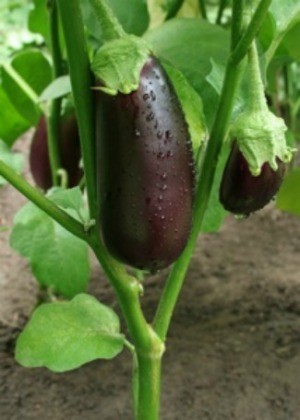 If you've ever tried and failed to grow eggplants, don't feel bad. You're not alone. Eggplants like to be pampered. These divas of the vegetable garden have a very low tolerance for stress, so unless your garden is in the perfect zone, growing them successfully is going to require a little bit more of your time and attention than usual.
If you've ever tried and failed to grow eggplants, don't feel bad. You're not alone. Eggplants like to be pampered. These divas of the vegetable garden have a very low tolerance for stress, so unless your garden is in the perfect zone, growing them successfully is going to require a little bit more of your time and attention than usual.
Most cultivars need at least 100 to 150 days of warm weather to produce, so gardeners in cooler zones (like zones 3 and 4) need to look for early producing varieties that mature in 60-70 days. Ichiban and Dusky are two good examples.
Eggplants need temperatures of approximately 75-85 degrees F (25-30 degrees C) to produce. Growth is stalled below 68 degrees F (20 degrees C) and may permanently stop if exposed to temperatures below 50 degrees F (10 degrees C) for any length of time. Placing dark colored rocks or bricks around the base of the plant can help retain the heat of the sun while plants are young.
Pollination can only occur during warm nighttime temperatures. Watch the weather. If temperatures are predicted to dip below 60 degrees F, you may want to cover your plants to avoid flower drop. Eggplants are self-pollinating, so hoop houses and row covers can be used from planting until harvest. Just make sure if you use plastic to remove it during the day to avoid cooking the plants.
Eggplants become stressed with too much or too little water. Try to keep the soil as evenly moist as possible through the season.
They like small amounts of food all season long. Too much nitrogen will produce lots of foliage but not much in the way of fruits. Feed plants with a diluted liquid fish emulsion weekly until flowers appear. Container plants should be fed a high pot-ash organic liquid fertilizer once fruit starts to set.
Eggplants appreciate a site that is warm, humid, and sheltered from the wind. Hoop houses, greenhouses, or row covers are good choices for keeping out cool temperatures, damaging winds and insects like flea beetles, while retaining the heat and humidity. If you use plastic row covers cut ample slits along the sides for ventilation and make sure to remove them during the heat of the day.
Tall plants should be staked to support the weight of growing fruit.
This page contains the following solutions.
Eggplants are related to tomatoes and potatoes. They are technically not a vegetable, but a fruit-specifically a berry. Eggplants grow on bushes and are from 2 to 12 inches long and dark purple to white in color.
A few years back, I decided to plant an enormous organic garden. Planting salad, cucumbers, and tomatoes weren't so difficult. I had never planted eggplants before.
Here are the questions asked by community members. Read on to see the answers provided by the ThriftyFun community.
I want to grow Black Beauty eggplants in pots. Do I need to prune the bottom or the little leaves off two weeks after planting? The two bottom leaves are yellow and there are a lot of little buds coming up on the sides. Please help.
Hardiness Zone: 7a
By grifft from Levittown, NY
Go to-how to grow eggplants in pots-lot of info there, good luck.
My fiances grandfather died and we got his eggplant to put in the ground. Since we've transplanted it, it continuously flowers but I cannot get it to bear fruit. It's been in the ground for about a month now. It is in direct sunlight as directed and is watered infrequently. The plant looks healthy overall and all of my other vegetables are doing magnificent, but this one is frustrating me to NO avail. Any tips would be greatly appreciated.
You might try pollinating the flowers with a feather. Just touch each flower lightly inside to transfer pollen from one blossom to the next.
Check out these photos.
The weather has been great this summer for gardening. This is the first of a lot of eggplants to enjoy.
I planted three eggplants. This is the first flower. Judging from the number of flowers, I'm going to have lots of eggplants this season!